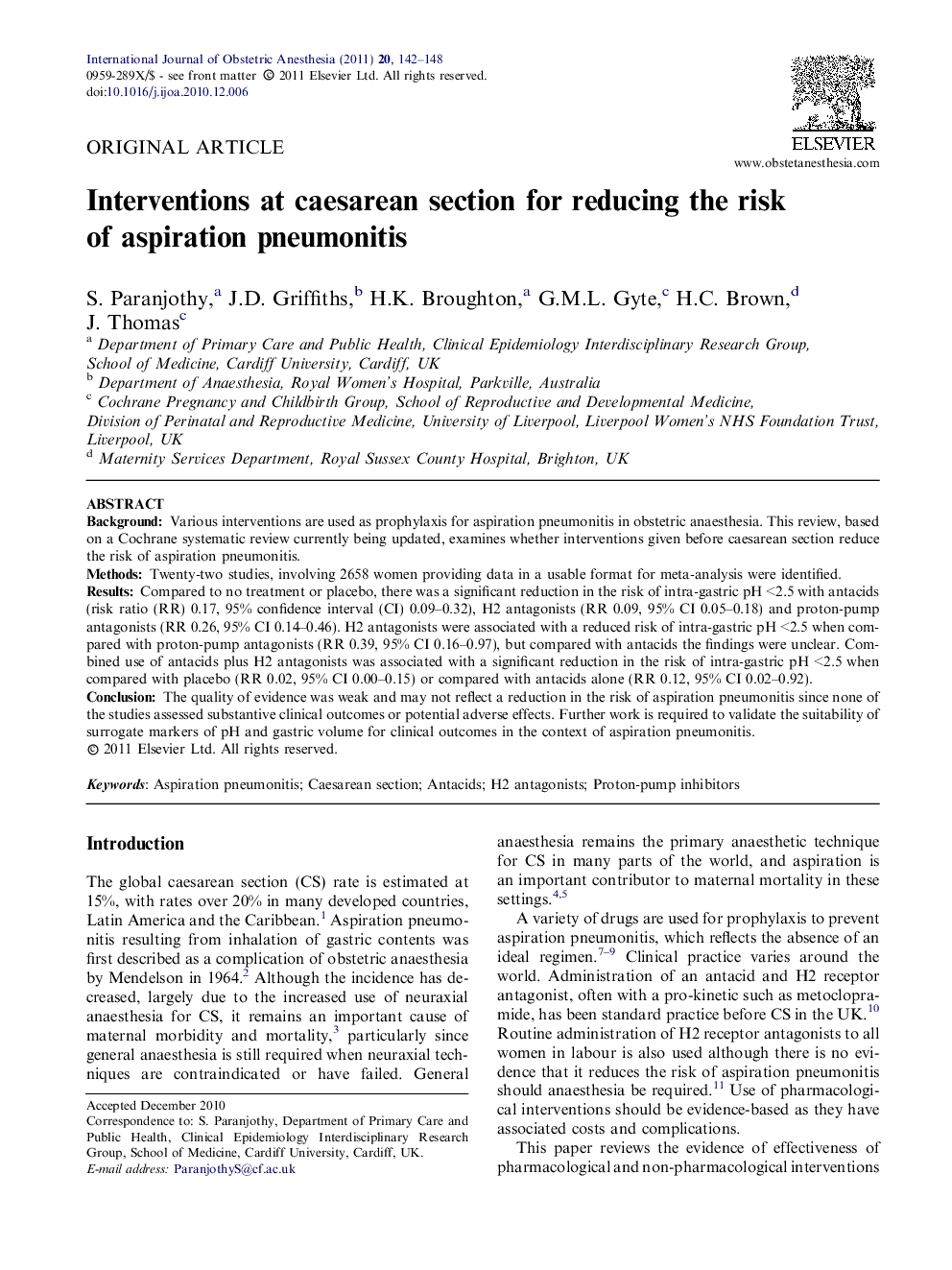| Article ID | Journal | Published Year | Pages | File Type |
|---|---|---|---|---|
| 2758020 | International Journal of Obstetric Anesthesia | 2011 | 7 Pages |
BackgroundVarious interventions are used as prophylaxis for aspiration pneumonitis in obstetric anaesthesia. This review, based on a Cochrane systematic review currently being updated, examines whether interventions given before caesarean section reduce the risk of aspiration pneumonitis.MethodsTwenty-two studies, involving 2658 women providing data in a usable format for meta-analysis were identified.ResultsCompared to no treatment or placebo, there was a significant reduction in the risk of intra-gastric pH <2.5 with antacids (risk ratio (RR) 0.17, 95% confidence interval (CI) 0.09–0.32), H2 antagonists (RR 0.09, 95% CI 0.05–0.18) and proton-pump antagonists (RR 0.26, 95% CI 0.14–0.46). H2 antagonists were associated with a reduced risk of intra-gastric pH <2.5 when compared with proton-pump antagonists (RR 0.39, 95% CI 0.16–0.97), but compared with antacids the findings were unclear. Combined use of antacids plus H2 antagonists was associated with a significant reduction in the risk of intra-gastric pH <2.5 when compared with placebo (RR 0.02, 95% CI 0.00–0.15) or compared with antacids alone (RR 0.12, 95% CI 0.02–0.92).ConclusionThe quality of evidence was weak and may not reflect a reduction in the risk of aspiration pneumonitis since none of the studies assessed substantive clinical outcomes or potential adverse effects. Further work is required to validate the suitability of surrogate markers of pH and gastric volume for clinical outcomes in the context of aspiration pneumonitis.
